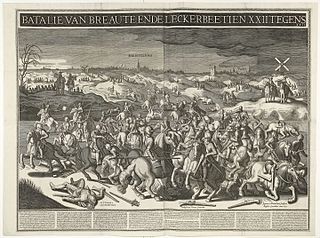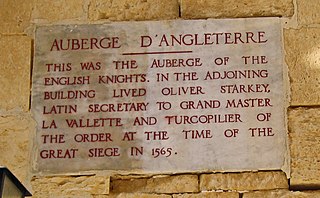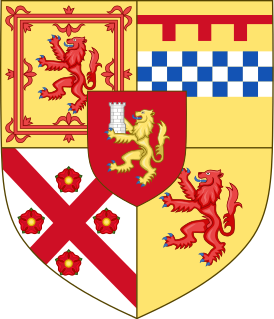 W
WGerard Abrahams van Houwelingen, known as Lekkerbeetje ("sweet-tooth") was a Brabantine cavalry officer in the armies of the Dutch Republic and later in the Army of Flanders.
 W
WLuca Arbore or Arbure was a Moldavian boyar, diplomat, and statesman, several times commander of the country's military. He first rose to prominence in 1486, during the rule of Stephen III, Prince of Moldavia, to whom he was possibly related. He became the long-serving gatekeeper of Suceava, bridging military defense and administrative functions with a diplomatic career. Arbore therefore organized the defense of Suceava during the Polish invasion of 1497, after which he was confirmed as one of Moldavia's leading courtiers.
 W
WFrancisco Balbi di Correggio, born in Correggio in the province of Province of Reggio Emilia, Italy, was an arquebusier who served with the Spanish contingent during the Siege of Malta. Little is known about him other than that he maintained a journal throughout the siege, which he afterwards published.
 W
WUdrea Băleanu, also known as Băleanul, Banul Udrea, or Udrea of Băleni, was a Wallachian and Moldavian statesman and military commander. He was especially noted as a key supporter, and alleged uncle, of the unifying Prince Michael the Brave, serving under his command in the Long Turkish War. In the early stages of Michael's revolt against the Ottoman Empire, Băleanu drove the Wallachian military forces into Rumelia, relieving Nikopol. He served as Ban of Oltenia, then commanded supporting contingents in the 1599 campaign to annex Transylvania. The following year, Michael employed him as one of his four regents in Moldavia, and also made him commander of the Moldavian army, with the title of Hetman. This assignment made Băleanu a direct enemy of the Movilă dynasty, which claimed the Moldavian throne, and of the Movilăs' backers in the Polish–Lithuanian Commonwealth.
 W
WCaptain Thomas Crawford or Thomas Craufurd (1530–1603) of Jordanhill was a trusted confidant of Henry Stuart, Lord Darnley, husband of Mary, Queen of Scots and a retainer of the Matthew Stewart, 4th Earl of Lennox. He famously planned the assault and led a small force of 150 men in 1571 that scaled the cliffs and embattlements to expel the castle garrison loyal to Catholic Queen Mary from Dumbarton Castle. Six years later, he became Provost of Glasgow, establishing a bursary for a student at the university and saving the cathedral from destruction.
 W
WBaron István Dobó de Ruszka (c. 1502 - Szerednye was a Hungarian soldier, best known as the successful defender of Eger against the Ottomans in 1552. Dobó was a member of the Hungarian land-owning nobility, with holdings in northern Hungary. In the dynastic succession struggles after the Battle of Mohács in 1526, Dobó was consistently on the side of the Habsburg King Ferdinand I rather than that of John Zápolya.
 W
WFlorian Geyer von Giebelstadt was a German nobleman, diplomat, and knight. He became widely known for leading peasants during the German Peasants' War.
 W
WJames Hamilton of Bothwellhaugh and Woodhouselee was a Scottish supporter of Mary, Queen of Scots, who assassinated James Stewart, 1st Earl of Moray, Regent of Scotland, in January 1570. He shot Moray from the steps of his uncle Archbishop John Hamilton's house in Linlithgow.
 W
WJohn of God, O.H. was a Portuguese soldier turned health-care worker in Spain, whose followers later formed the Brothers Hospitallers of Saint John of God, a worldwide Catholic religious institute dedicated to the care of the poor, sick, and those suffering from mental disorders. He has been canonized by the Catholic Church, and is considered one of the leading religious figures in the Iberian Peninsula.
 W
WFra' Philippe de Villiers de L'Isle-Adam was a prominent member of the Knights Hospitaller at Rhodes and later Malta. Having risen to the position of Prior of the Langue of Auvergne, he was elected 44th Grand Master of the Order in 1521.
 W
WBernardino de Mendoza was a Spanish military commander, a diplomat and a writer on military history and politics.
 W
WSir Rhys ap Thomas (1449–1525) was a Welsh soldier and landholder who rose to prominence during the Wars of the Roses, and was instrumental in the victory of Henry Tudor at the Battle of Bosworth. He remained a faithful supporter of Henry and was rewarded with lands and offices in South Wales. Some sources claim that he personally delivered the death blow to King Richard III at Bosworth with his poleaxe.
 W
WAmiral Kabir Sayyid Mahmud Khan Barha, also known as Mahmud Khan, was a general in the Akbar's army, son of Sayyid Mubarak, was the first person of this family - the Saiyids of Barah - to rise to the rank of a nobleman. This he did through his bravery and valour during the Timurid Dynasty. He joined the service of Bairam Khan.
 W
WSir Oliver Starkey (c.1523-83/86), was an English knight who lived in the 16th century. He was the only English knight present at the siege of Malta,. It was wrongly assumed that he was buried in the crypt of St. John's Co-Cathedral in Valletta. The tombstone with his name on it contains only a poem written by Oliver Starkey for Grand Master Jean de Valette. The Poem reads, in translation:'To God, Supreme, Almighty, Sacrosanct. He [De Valette] was the dread of Asia and Libya and once the guardian of Europe, after he had subdued the Turks by means of his Sacred Arms, the first one to lie buried in the grave, here in this propitious city of Valletta which he founded, worthy of eternal honour. Fra. Oliver Starkey, Pro-Turcopolier, wrote [this] poem.'
 W
WHenry Stewart, 1st Lord Methven was Master of the Scottish Artillery and last husband of Margaret Tudor, eldest daughter of Henry VII of England and Elizabeth of York.
 W
WGarcilaso de la Vega, KOS was a Spanish soldier and poet. Although not the first or the only one to do so, he was the most influential poet to introduce Italian Renaissance verse forms, poetic techniques, and themes to Spain. He was well known in poetic circles during his lifetime, and his poetry has continued to be popular without interruption until the present. His poetry was published posthumously by Juan Boscán in 1543, and it has been the subject of several annotated editions, the first and most famous of which appeared in 1574.
 W
WSir Roger Williams was a Welsh soldier of fortune and military theorist, who served the Protestant cause, fighting against the Spanish in several theatres of war. Robert Dudley, 1st Earl of Leicester said that as a soldier he was "worth his weight in gold". He was later a close associate of Robert Devereux, 2nd Earl of Essex, and became a national hero because of his exploits fighting the Catholic League. He has been described as "an obstreperous, opinionated Welsh soldier" who was "Essex's devoted confederate and agent".
 W
WGiovanni Battista Zanchi was an Italian engineer and author.